Nomad has earned a solid reputation as a flexible scheduler and orchestrator, but it’s not the only game in town. Whether you’re running containers, microservices, or complex batch workloads, there are tools out there that might fit your workflow a bit better, offer extra features, or simply align more naturally with your existing stack. In this guide, we’ll explore some of the top Nomad alternatives, why teams are switching, and what to consider before making a move. It’s not about finding a “better” tool universally – just the one that clicks for your team.

1. AppFirst
AppFirst handles the infrastructure so developers can focus on building their apps. The system provisions resources automatically based on what an application needs, taking care of networking, databases, and compute allocation. This allows AppFirst to stay out of the way of day-to-day development while providing a stable and consistent environment for deployments.
AppFirst supports multiple clouds and both SaaS and self-hosted deployments, accommodating a range of project types without extra setup. It also tracks changes, costs, and performance metrics to understand how the infrastructure behaves and make adjustments when necessary. This approach simplifies managing deployments across multiple teams or projects.
נקודות עיקריות:
- Automatic provisioning of compute, database, and networking resources
- Works across AWS, Azure, and GCP
- Supports SaaS or self-hosted deployment models
- Built-in logging, monitoring, and alerting
- Centralized auditing of infrastructure changes
Who it’s best for:
- Teams looking to focus on app development rather than infrastructure
- Organizations deploying across multiple cloud providers
- Projects requiring automatic scaling and resource management
- Developers or small teams without a dedicated DevOps group
פרטי קשר:
- אֲתַר אִינטֶרנֶט: www.appfirst.dev

2. Northflank
Northflank focuses on simplifying the process of running and deploying applications, databases, and jobs across cloud environments. Teams can deploy workloads in managed cloud accounts or connect their own Kubernetes clusters on platforms like GCP, AWS, Azure, or bare-metal. This setup allows handling ephemeral, staging, and production environments consistently, with pipelines and templates to streamline repeated tasks. Observability tools are included to monitor logs, metrics, and alerts, helping maintain performance and troubleshoot when necessary.
Northflank also supports GPU workloads, AI inference, and training jobs, giving teams flexibility for different services and scaling needs. Continuous integration and deployment mechanisms move code from development to production more smoothly. Leveraging Kubernetes as an underlying platform standardizes deployments without managing infrastructure directly, helping teams maintain control while reducing repetitive operational work.
נקודות עיקריות:
- Supports containers, databases, jobs, and GPU workloads
- Works with managed cloud or bring-your-own Kubernetes clusters
- Continuous integration and deployment pipelines
- Observability with logs, metrics, and alerts
- Templates for repeatable deployment patterns
Who it’s best for:
- Teams deploying AI or GPU-intensive workloads
- Organizations running multi-environment deployments
- Developers needing CI/CD pipelines integrated with Kubernetes
- Teams looking for multi-cloud or hybrid cloud flexibility
פרטי קשר:
- Website: northflank.com
- E-mail: contact@northflank.com
- Twitter: x.com/northflank
- LinkedIn: www.linkedin.com/company/northflank
- Address: Company 11918540 20-22 Wenlock Road, London, England, N1 7GU
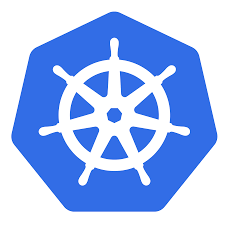
3. Kubernetes
Kubernetes organizes and manages containerized applications by grouping them into logical units, making deployment, scaling, and discovery more straightforward. It automates routine tasks like rolling out updates, scaling services, and recovering from failures, which helps teams maintain stability without manually managing each container. Its design allows workloads to run consistently across on-premises, hybrid, or public cloud environments, giving teams flexibility in where they deploy applications.
Kubernetes also handles batch jobs, storage orchestration, and secret management, ensuring resources are used efficiently and securely. Horizontal scaling and automatic bin packing help optimize utilization, while self-healing features restart containers or replace Pods when needed. Extensibility allows teams to add new features without altering the core system, providing a flexible platform that can grow alongside the complexity of their workloads.
נקודות עיקריות:
- Automates deployment, scaling, and rollbacks
- Service discovery and load balancing included
- Manages batch workloads and CI jobs
- Secret and configuration management
- Self-healing and horizontal scaling
- Supports on-premises, hybrid, and public cloud deployments
Who it’s best for:
- Teams managing containerized applications across multiple environments
- Organizations needing automated scaling and workload recovery
- Developers handling both services and batch or CI workloads
- Projects requiring flexibility to extend platform features without changing core code
פרטי קשר:
- Website: kubernetes.io
- Twitter: x.com/kubernetesio
- LinkedIn: www.linkedin.com/company/kubernetes

4. Amazon ECS
Amazon ECS provides a platform for running and managing containerized applications across cloud and on-premises environments. It automates tasks like deploying, scaling, and scheduling containers, allowing teams to focus on configuring workloads rather than handling infrastructure details. Integration with other AWS services makes it possible to manage security, networking, and storage consistently while supporting a variety of deployment models.
Amazon ECS also handles batch workloads and can run containers on demand using different compute options like EC2, Fargate, and spot instances. Teams can deploy machine learning models, AI workloads, or web applications while leveraging automated scaling and monitoring. The system organizes resources efficiently and ensures workloads are distributed properly to maintain reliability across multiple availability zones.
נקודות עיקריות:
- Automated container deployment, scaling, and scheduling
- Integration with AWS services for networking, storage, and security
- Supports EC2, Fargate, and spot instance compute models
- Batch workload management and AI/ML model deployment
- Multi-zone deployment for high availability
Who it’s best for:
- Teams running containerized applications on AWS
- Organizations using machine learning or AI workloads
- Projects needing automated scaling and resource management
- Developers leveraging multiple AWS services in deployments
פרטי קשר:
- אתר אינטרנט: aws.amazon.com
- פייסבוק: www.facebook.com/amazonwebservices
- טוויטר: x.com/awscloud
- לינקדאין: www.linkedin.com/company/amazon-web-services
- אינסטגרם: www.instagram.com/amazonwebservices

5. Red Hat OpenShift
Red Hat OpenShift provides a platform for managing containerized applications across hybrid and multi-cloud environments. It automates deployment, scaling, and scheduling of workloads while offering integrated tools for monitoring, logging, and security. Teams can define application requirements and rely on the platform to manage orchestration, reducing the need for manual intervention in repetitive operational tasks.
OpenShift also supports CI/CD workflows, enabling developers to push code from development to production more efficiently. Its Kubernetes foundation allows for flexible deployments, and integrated templates help teams standardize application setup across environments. This combination ensures workloads are distributed effectively, resources are used efficiently, and applications remain resilient even under varying loads.
נקודות עיקריות:
- Automates deployment, scaling, and workload scheduling
- Built-in monitoring, logging, and security tools
- Supports CI/CD workflows and development pipelines
- Flexible hybrid and multi-cloud deployment options
- Templates for consistent application setup
Who it’s best for:
- Teams managing containerized applications across multiple clouds
- Organizations needing integrated CI/CD pipelines
- Developers requiring standardized deployment templates
- Projects with a mix of production, staging, and development environments
פרטי קשר:
- אתר אינטרנט: www.redhat.com
- דוא"ל: apac@redhat.com
- Facebook: www.facebook.com/RedHat
- טוויטר: x.com/RedHat
- לינקדאין: www.linkedin.com/company/red-hat
- Address: 100 E. Davie Street Raleigh, NC 27601, USA
- Phone: 8887334281
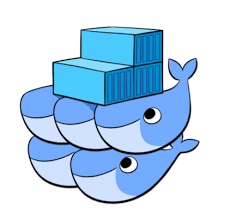
6. Docker Swarm
Docker Swarm provides a native clustering and orchestration solution for Docker containers. It allows teams to group multiple Docker engines into a single cluster, called a swarm, and manage containerized applications across them. The swarm manager monitors cluster state, ensuring that containers are running as intended and replacing them if nodes fail. Developers can define application stacks declaratively, specifying how many replicas of each service should run, and Swarm handles distribution and scaling automatically.
Swarm also supports service discovery, load balancing, and multi-host networking, making it possible to expose applications both internally and externally without manual configuration of network details. Rolling updates can be applied incrementally, and secure communication is enforced between nodes with TLS encryption. This setup simplifies container management while keeping deployments predictable and resilient, especially for teams already familiar with Docker.
נקודות עיקריות:
- Cluster management built into Docker Engine
- Declarative service model with desired state reconciliation
- Automated scaling and replication of containers
- Service discovery and internal load balancing
- Multi-host networking with overlay networks
- Rolling updates with rollback support
- TLS-secured communication by default
Who it’s best for:
- Teams running Docker-based applications looking for integrated orchestration
- Projects that need straightforward scaling and replication of services
- Organizations managing multiple hosts or environments with containerized workloads
- Developers who want to maintain a consistent Docker workflow across clusters
פרטי קשר:
- Website: docs.docker.com
- Facebook: www.facebook.com/docker.run
- Twitter: x.com/docker
- LinkedIn: www.linkedin.com/company/docker
- Instagram: www.instagram.com/dockerinc
- Address: 3790 El Camino Real # 1052 Palo Alto, CA 94306
- Phone: (415) 941-0376
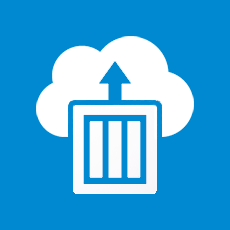
7. Azure Container Instances
Azure Container Instances lets teams run containers in the cloud without worrying about underlying servers or infrastructure. They can launch containerized workloads quickly, which makes it easier to handle spikes in traffic or temporary demands. The service provides isolated environments for containers using hypervisor-level separation, giving each container group its own secure runtime while still keeping the deployment lightweight and flexible.
Developers can integrate these container instances with Kubernetes clusters using the Virtual Kubelet, which allows workloads to scale out automatically when needed. This setup helps teams avoid overprovisioning and lets them focus on building applications rather than managing servers. Containers can start in seconds, making it useful for burst workloads or environments that need fast provisioning and removal of resources.
נקודות עיקריות:
- Run containers without managing servers
- Hypervisor isolation for secure workloads
- Fast provisioning and elastic scaling
- Integrates with Kubernetes via Virtual Kubelet
- Supports burst workloads and temporary demand
- Pay-as-you-go pricing with per-second billing
Who it’s best for:
- Teams needing cloud-based container deployment without server management
- Projects with unpredictable traffic that require rapid scaling
- Developers integrating containers with Kubernetes clusters
- Workloads that benefit from secure, isolated runtime environments
פרטי קשר:
- אתר אינטרנט: azure.microsoft.com
- Twitter: x.com/azure
- LinkedIn: www.linkedin.com/showcase/microsoft-azure
- Instagram: www.instagram.com/microsoftazure
- טלפון: (800) 642 7676
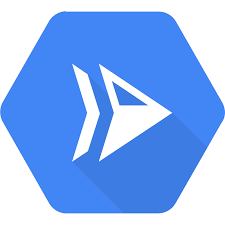
8. Google Cloud Run
Google Cloud Run allows teams to run containerized applications without needing to manage servers or clusters. They can deploy workloads directly from source code or prebuilt containers, and the platform automatically handles scaling, even down to zero when no requests are incoming. This approach simplifies operations for event-driven applications, APIs, and web services while keeping deployment consistent across multiple regions.
Cloud Run also supports GPU workloads for AI and machine learning tasks, providing on-demand compute resources without the overhead of provisioning virtual machines. The service integrates with other Google Cloud products, enabling batch jobs, streaming data processing, and microservices architectures. Its ability to scale quickly and manage underlying infrastructure helps teams focus on building applications instead of worrying about operational overhead.
נקודות עיקריות:
- Run containers without managing servers
- Automatically scales from zero to handle demand
- Supports GPUs for AI and ML workloads
- Deploy directly from source code or container images
- Integrates with Google Cloud services for batch and streaming workloads
- Multi-region deployment options
Who it’s best for:
- Teams building event-driven applications or APIs
- Developers who want fast, serverless scaling for containers
- Projects requiring temporary or elastic compute for batch jobs
- Workloads that need GPU access for AI or ML tasks
- Organizations already using Google Cloud services for other applications
פרטי קשר:
- Website: cloud.google.com

9. Heroku
Heroku provides a platform where teams can deploy and run applications without managing the underlying infrastructure. They work with “dynos,” which are container-like environments that execute code in a managed runtime. This setup allows developers to focus on building features, running batch jobs, or hosting APIs while Heroku handles scaling, monitoring, and operational maintenance in the background.
The platform supports a variety of programming languages and frameworks, and it integrates with databases, caching, and third-party services. Teams can quickly roll back deployments, manage app-level permissions, and extend functionality through buildpacks or add-ons. By abstracting away server management, Heroku helps teams iterate faster and focus on application logic and data-driven tasks.
נקודות עיקריות:
- Runs applications in managed dynos without server management
- Supports multiple languages and frameworks
- Easy rollback and deployment management
- Integrates with databases, caching, and add-ons
- Scales applications up or down quickly
- Provides monitoring and app metrics
Who it’s best for:
- Developers who want to focus on building apps instead of infrastructure
- Teams running web applications, APIs, or batch jobs
- Projects that benefit from quick scaling and deployment
- Organizations needing easy integration with databases and external services
- Teams looking for a simplified environment for testing and experimentation
פרטי קשר:
- Website: www.heroku.com
- E-mail: heroku-abuse@salesforce.com
- Twitter: x.com/heroku
- LinkedIn: www.linkedin.com/company/heroku
- Address: 415 Mission Street Suite 300 San Francisco, CA 94105

10. DigitalOcean App Platform
DigitalOcean App Platform gives teams a managed environment to deploy applications without worrying about underlying servers or clusters. They can push code directly from Git repositories or use container images, and the platform handles deployment, scaling, and runtime management automatically. This makes it easier to manage web apps, APIs, background jobs, and static sites while keeping infrastructure concerns out of the way.
The platform also includes features for scaling, monitoring, and rollback, which allow teams to adjust resources based on demand and track changes over time. Developers can integrate databases, caching, and third-party services, as well as use serverless functions for on-demand tasks. Overall, it provides a flexible, straightforward setup for running applications in a managed cloud environment.
נקודות עיקריות:
- Deploy directly from Git repositories or container registries
- Automatically scales applications based on demand
- Built-in monitoring, logging, and rollback capabilities
- Supports multiple frameworks and languages out of the box
- Integrates easily with databases, caching, and third-party services
- Add serverless functions as part of application workflows
Who it’s best for:
- Developers who want a simple, managed deployment environment
- Teams building web applications, APIs, or scheduled jobs
- Projects that need flexible scaling without managing servers
- Organizations using multiple DigitalOcean services together
- Developers experimenting with serverless functions or new frameworks
פרטי קשר:
- Website: www.digitalocean.com
- Facebook: www.facebook.com/DigitalOceanCloudHosting
- Twitter: x.com/digitalocean
- LinkedIn: www.linkedin.com/company/digitalocean
- Instagram: www.instagram.com/thedigitalocean
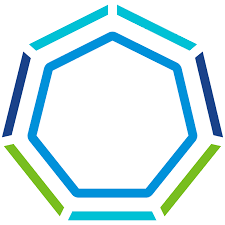
11. VMware Tanzu Platform
VMware Tanzu Platform provides organizations with a way to manage application deployment and scheduling in a consistent and automated manner. They streamline the developer workflow from code to production, offering tools to handle containerized workloads, continuous delivery, and scaling without requiring teams to manage every detail of the underlying infrastructure. Developers can focus on building applications while the platform manages runtime, deployment pipelines, and operational tasks like autoscaling and high availability.
Tanzu Platform also integrates data services and enterprise-grade security into the deployment process. Teams can bind AI models to applications, use managed databases, and connect third-party tools with built-in credential handling. Automation features such as patching, credential rotation, and repair routines help maintain compliance and reduce operational overhead, making it easier for organizations to manage multiple applications at scale while keeping governance and security consistent.
נקודות עיקריות:
- Simplifies deployment pipelines and supports continuous delivery
- Handles containerized workloads with autoscaling and high availability
- Integrated enterprise data services like PostgreSQL, MySQL, and RabbitMQ
- Built-in security, compliance, and automated patching
- Supports AI model integration and application lifecycle management
- Connects to third-party tools and services with credential management
Who it’s best for:
- Platform engineers managing multiple application teams
- Enterprises with compliance and governance requirements
- Developers building AI-powered or data-intensive applications
- Organizations looking for automated container builds and scaling
- Teams using Spring framework or enterprise Java applications
פרטי קשר:
- Website: www.vmware.com
- Facebook: www.facebook.com/vmware
- Twitter: x.com/vmware
- LinkedIn: www.linkedin.com/company/vmware/mycompany
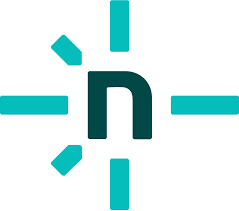
12. Netlify
Netlify offers a platform where teams can deploy applications and websites without managing the underlying infrastructure. They focus on simplifying the deployment process so that developers can push updates directly from repositories or supported tools, with each change generating a shareable preview. The platform handles scaling, security, and uptime automatically, which allows teams to focus on building features instead of managing servers or networking.
In addition to deployment, Netlify provides built-in tools for serverless functions, APIs, and data storage, letting teams handle a variety of backend tasks without needing a separate backend setup. Its features also include integration with AI models through a unified gateway, automatic scaling, and workflow automation, making it easier to manage projects from small prototypes to applications handling larger traffic volumes.
נקודות עיקריות:
- Deploy directly from GitHub, GitLab, or other supported tools
- Instant preview links for each change
- Serverless functions and built-in APIs
- Automatic scaling and managed security
- Integrated data and file storage
- AI Gateway to call multiple AI models from code
Who it’s best for:
- Developers building static sites, marketing sites, or AI apps
- Teams wanting minimal DevOps overhead
- Projects that need serverless functions and API integration
- Groups looking for automatic scaling with no manual infrastructure management
- Organizations that want quick previews and testing for each change
פרטי קשר:
- Website: www.netlify.com
- Twitter: x.com/netlify
- LinkedIn: www.linkedin.com/company/netlify
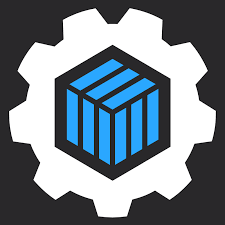
13. Cycle
Cycle is a platform that makes managing complex infrastructure a lot less stressful. It can take all your scattered resources – public cloud accounts, on-prem servers, even bare-metal machines – and bring them together into a single private cloud. From there, you can manage containers, virtual machines, and serverless functions all in one place.
One of the things that stands out about Cycle is how much it automates. Updates, security patches, and general maintenance happen in the background, so you’re not constantly babysitting your nodes. The platform also helps optimize resource usage and keeps everything running smoothly. With a central portal to visualize and manage workloads, declarative workflows for predictable deployments, and built-in secret management, it’s a solid choice if you want control without drowning in operational complexity.
נקודות עיקריות:
- Deploy containers, VMs, and functions on any infrastructure
- Multi-region and provider-agnostic management
- Automated updates and security patches
- Declarative delivery with rollout control
- Built-in monitoring and logging tools
- Centralized secret and access management
Who it’s best for:
- Teams managing hybrid, multi-cloud, or on-prem environments
- Organizations looking to reduce DevOps overhead
- Groups needing automation for deployments and updates
- Projects that require control over infrastructure and data
- Developers working with both containers and virtual machines
פרטי קשר:
- Website: cycle.io
- LinkedIn: www.linkedin.com/company/cycle-platform
- Address: 18124 Wedge Pky. #208 Reno, NV 89511 U.S.A.
מַסְקָנָה
When teams start looking for alternatives to Nomad, it usually comes down to what kind of balance they want between control, simplicity, and flexibility. Some tools are great if you just need lightweight deployments for edge devices or IoT projects. Others are better if you’re trying to wrangle a mix of cloud providers and on-prem servers under one roof. The truth is, there’s no single “best” option – it’s more about which tool actually fits into the way your team works.
At the end of the day, the goal is pretty simple: make life easier for developers while still giving operations teams enough visibility and control to keep things running smoothly. That might mean trying out a few tools, combining different pieces, or slowly migrating workloads to see what actually clicks. These days, there’s a lot more choice, which means you can tailor deployments to your specific needs instead of forcing your workflow to fit a rigid system. It’s not just about picking a scheduler anymore – it’s about shaping a workflow that actually works in real life.


